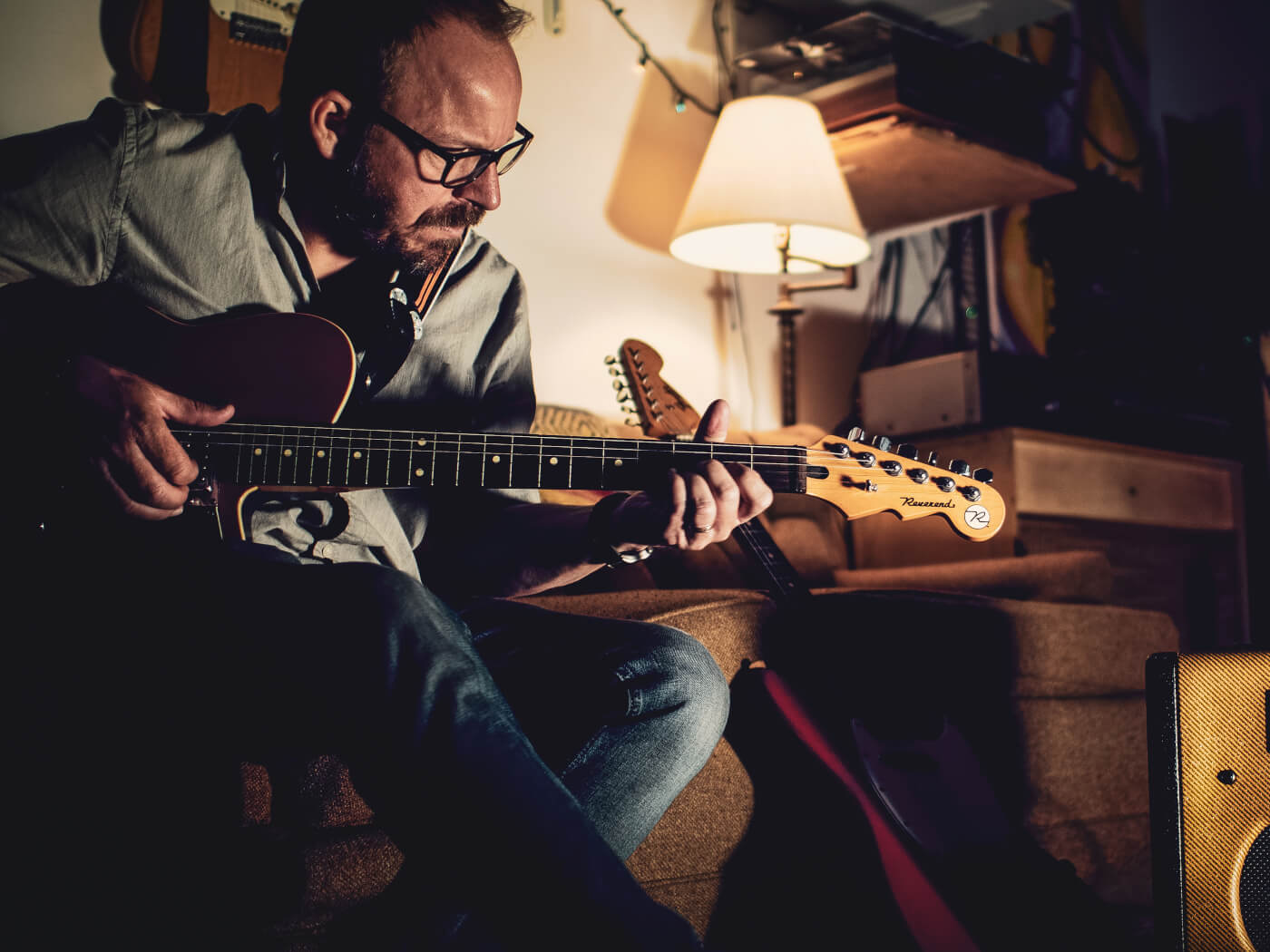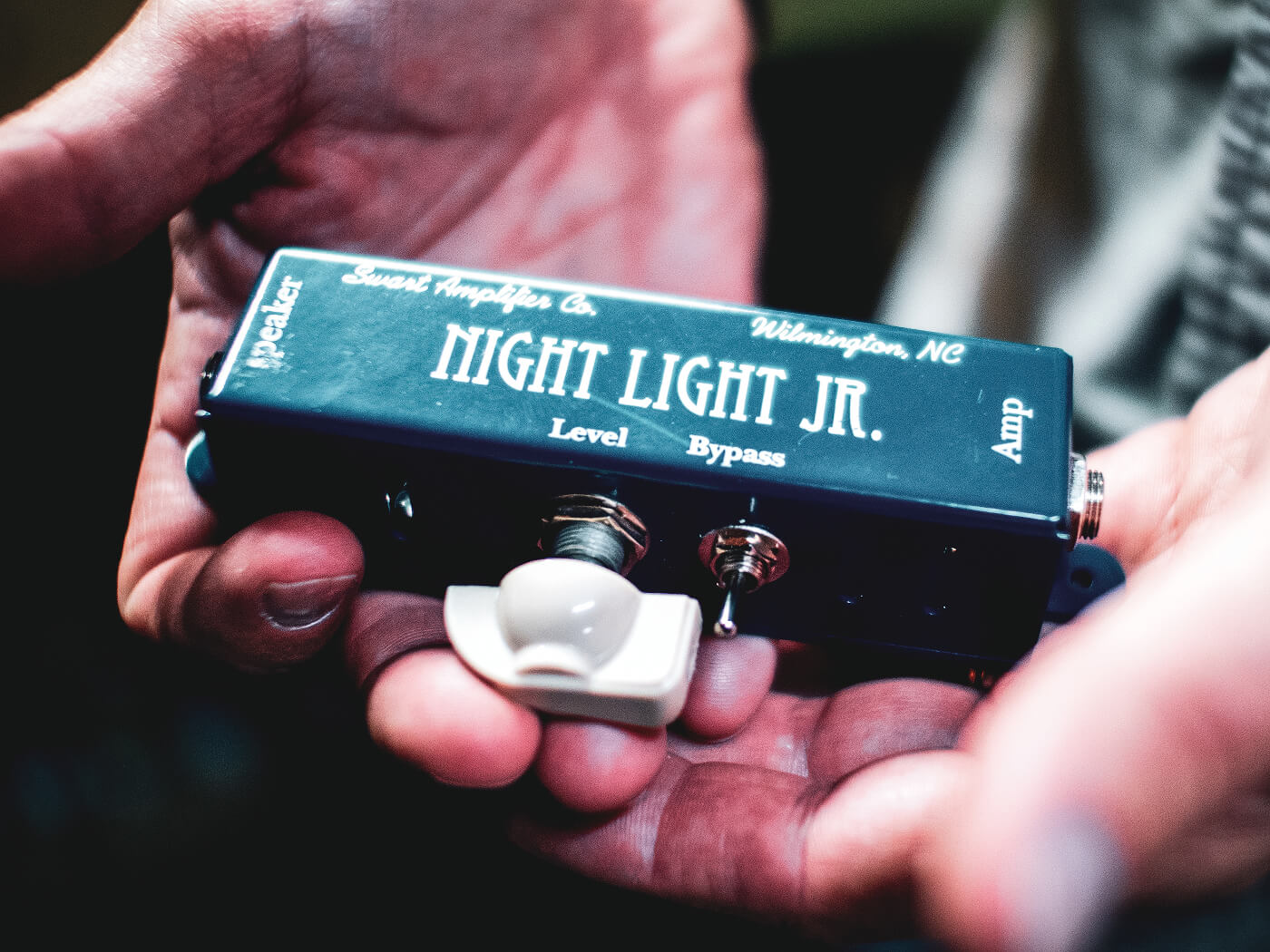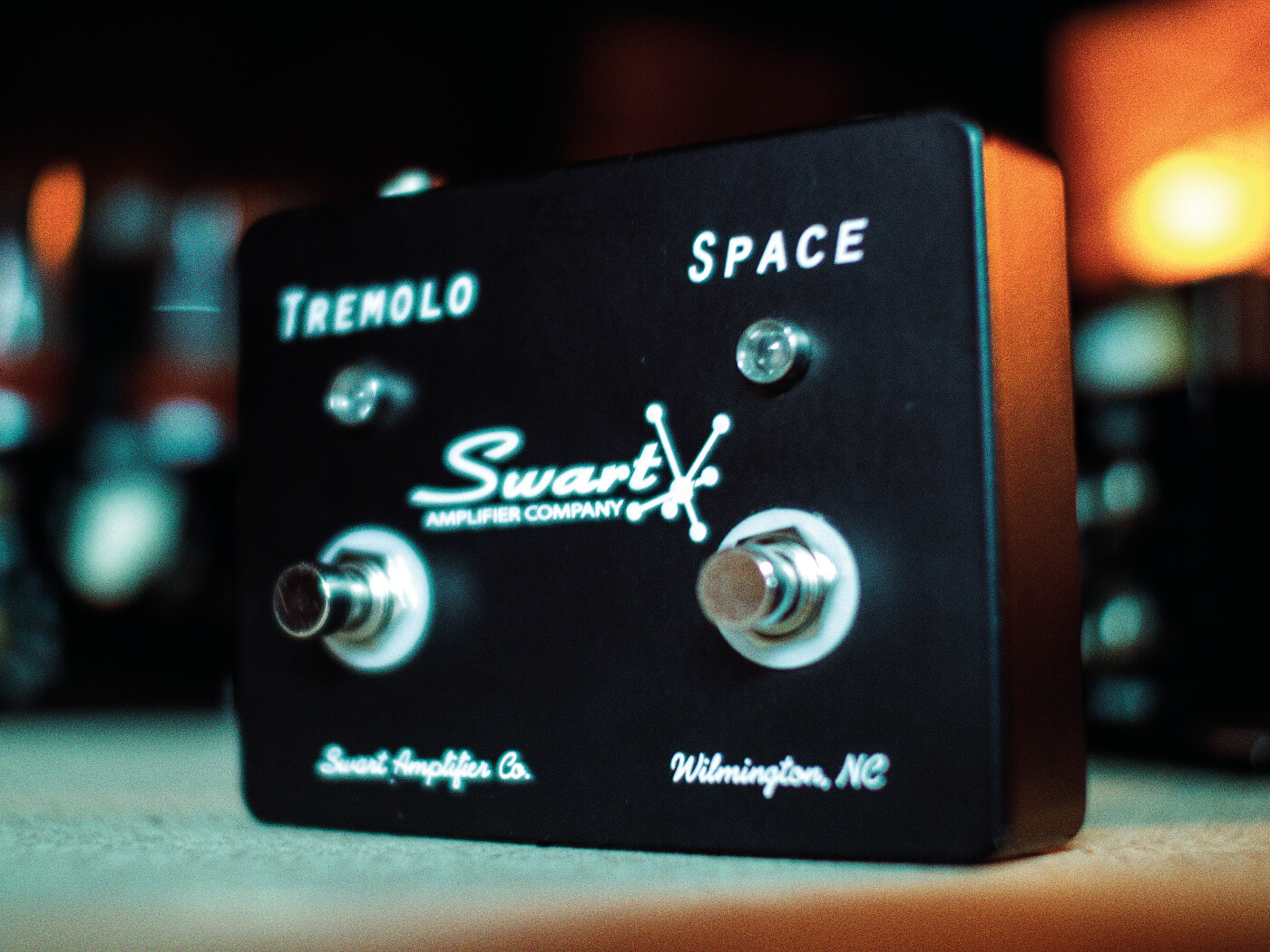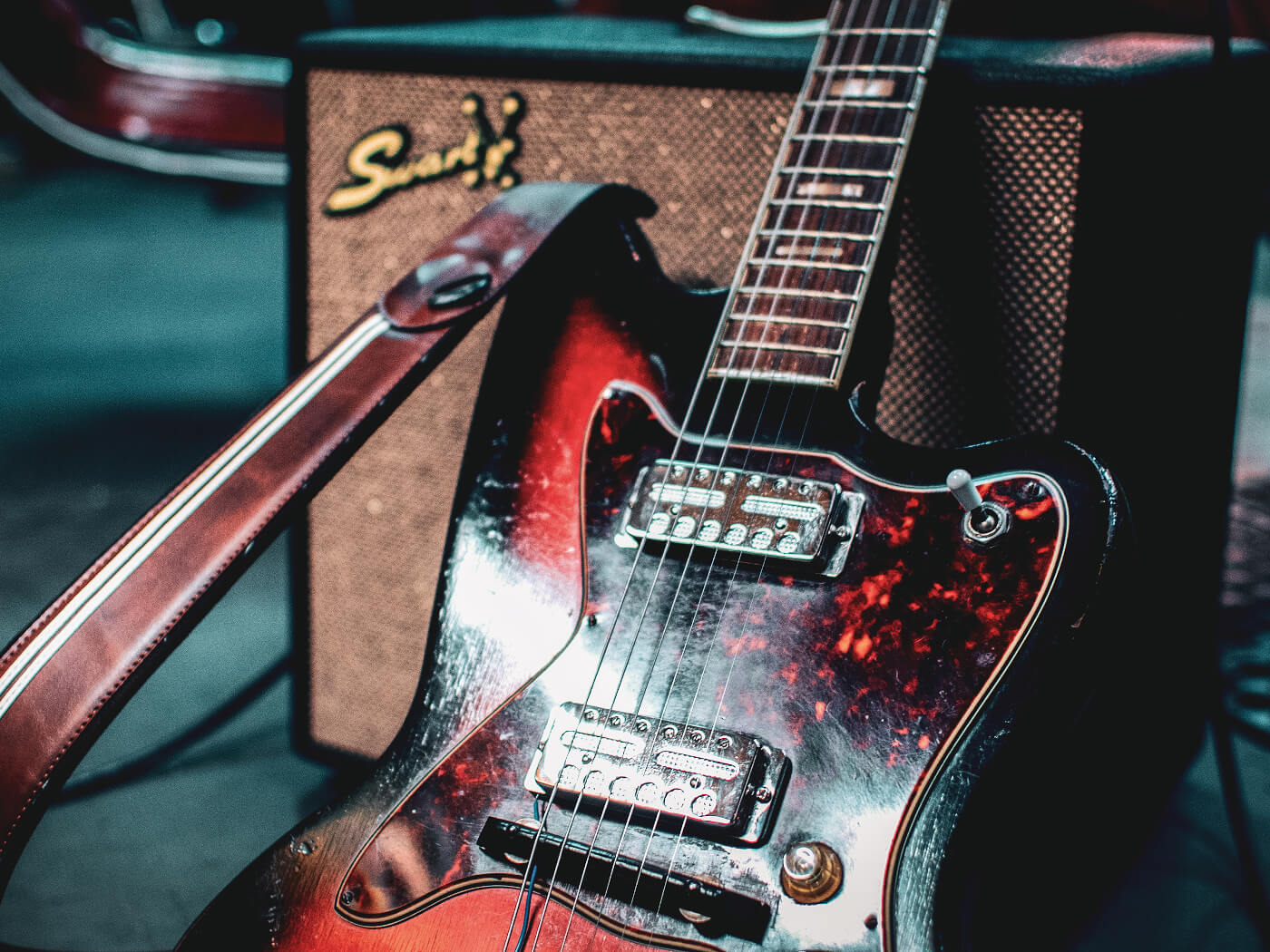Related Tags
“We’ve always been about less-is-more”: Michael Swart’s amps are retro-modern works of art
The amp maker has earned a reputation for creating hand-made guitar amplifiers of style and substance. Find out more about the origins of the brand from the man himself.

Michael Swart, founder and head of North Carolina’s Swart Amplification
There’s a phenomenon I’ve come to recognise any time I’ve dropped in to peruse one of the many amp-related online forums – something I like to call ‘research’, but which is probably just the same quest for that quick endorphin hit most of us indulge in when diverting from our daily workload for a few moments – which we might dub the ‘how soon until Swart is mentioned?’ effect. Click on a thread that begins with one person’s search for a great-sounding, portable, lower-wattage combo and you’re almost guaranteed that among the first three or four replies, you’ll see: “Get a Swart AST!”, a sentiment that will undoubtedly be reconfirmed throughout the thread.
And with good reason: Michael Swart’s creations are not only great little works of retro-modern art and easy front-seat-of-the-Fiat 500 portables, they just sound great, one after the other. And don’t just take my word for it: Jeff Tweedy, Dean Wareham, Matthew Sweet, Joey Santiago, Trey Anastasio, Buddy Miller, Keith Urban, Ray LaMontagne, Vince Gill and Michael Kiwanuka have all confirmed the point in their backlines. But for all that, there’s much more to this North Carolina-based designer, manufacturer and studio owner than those funky combos that look like something you pulled from your grandad’s closet.
Flowers and milk
For the young Swart, the electric guitar and its related electronics came along as a means of escaping what might otherwise have been the inevitability of his Dutch heritage – and with it, the small farm in Castle Hayne, North Carolina, on which he grew up in the 1970s and 80s. “We’re talking flowers and milk in the past,” he tells us. “The only flowers and milk these days are in my yard and in my refrigerator.
“When I was young, my parents thought it would be a wonderful thing if their son started playing classical piano. I figure they were hoping I wouldn’t go into flowers and milk. Anyway, after about seven years of lessons, five of them complaining, I started improvising and writing my own stuff that didn’t much resemble what my earnest teacher had in mind. I loved creating melodies, but the piano felt too immobile. Bottom line, you can’t bring the piano onto your bed at 1AM while listening to the radio.”

At the age of 15, Swart began his guitar obsession proper, in the same place it began for many of us in that era: with a cheap import acquired with odd-job money.
“I’m talking Japanese knockoff of a red Gibson ES-335 purchased in the North Carolina state-school band room after parting with a hard-earned $65,” says Swart. “My parents were not amused, even after I told them it was only $30. Old mum and dad were seeing their piano-playing son’s dreams go up in six-string flames. I will never forget that first guitar, and it’s a rather prized possession which still sits in my studio in all its high-school jazz-band splendour.”
When time came to amp up the offshore semi, Swart’s other early obsession was primed to serve him well. From an even younger age, he had pursued a hobby in electronics, building crystal radio sets from the age of eight and dodging his parents’ cries of: “What in the name of…? You’ll burn the house down!”
The magical Silvertone
“My very first exposure to tubes,” Michael recalls, “was an old Sears Silvertone console that played LPs [for a time, much of Sears’ entire electronics range carried the Silvertone name]. This big monster was the focal point in the Swart household. I remember crawling behind the console looking at those magical glowing tubes; they were totally fascinating to me.”
The aspiring guitarist’s first real tube-guitar amp came with its own guitar right inside the box: an old Silvertone 1448 guitar and amp-in-case combo, secured from the local pawn shop. The amp portion of the set was missing a tube and the power cable had been cut from it, but the guitar itself was initially enough to cause some excitement.
“A few artists that I really liked played them at the time,” says Swart. “Dexter Romweber of The Flat Duo Jets and Rick Miller of Southern Culture On The Skids.”
Getting the amp running delivered the one-day amp maker his first real ‘win’ in that department; a tube pilfered from his mother’s short-wave radio and an AC cord and plug hijacked from her cake mixer, and the amp-in-case was ready to ride again. “After that, the amp came to life with that unmistakable tube warmth, that somewhat loose-but-soulful tone that put my lowly solid-state amp to shame as a two-dimensional play toy. It’s another prized possession that’s still in my shop. I still fire it up, and it’s been on some client recordings.”

Shortly after the experience of bringing the Silvertone 1448 back to life, Swart stepped up to an A-list amp in the form of an Ampeg Reverberocket, as well as the big-ticket repair costs that came along for the ride after deciding he should have it serviced by a pro. From there on out, he’d do the work himself: “It’s just that simple a start… I never let another person touch a tube amp of mine from that very day on.”
As such, the future entrepreneur was entirely self-taught in the realm of amp circuits and valve electronics. Taking degrees in computer engineering and math at the University Of North Carolina in Wilmington did help with problem solving, troubleshooting and honing in on the best solutions in real-world engineering situations, but Swart’s guitar-amp ethos would be formed more by the dozens of old valve radio and hi-fi consoles he salvaged from the roadsides and yard sales over the years, and turned into fully functional guitar amps.
“Cool, man! Can you build me one?”
When Swart transitioned from reworking existing vintage valve gear to creating his own amps from scratch, the salvage aspect remained a big part of it. By now, he’d developed an appreciated for vintage transformers and their contribution to the tone and was also indulging his predilection toward the retro styling that any Swart player would instantly recognise today.
“I continued the process of gutting old single-ended and small low-wattage push-pull hi-fi amps and rebuilding them into guitar amps in all sorts of unique enclosures,” he tells us. “I would use old suitcases from the 40s, guitar cases, anything that spoke to me. You know, one of the critical learning aspects was working without schematics on many of these amps, learning to follow the signal path with attention to results… what worked and didn’t work, in the ultimate tone quest.
“I had a small studio above my garage and all these creations began to populate the space. We would have musicians and studio clients come in to play and record and be totally smitten with these one-off designs. I don’t know how many times I heard the phrase, ‘Cool man! Can you build me one?’ That’s when the idea first hit; people dug something I made!”
The look of these amps became more fully formed when Swart stumbled upon a heavily patina’d old single-ended Supro while perusing a local flea market. It had a nasty hum, almost zero output, but something about the ancient combo was calling to him.

“I got it home and tinkered with the circuit, making a few changes with parts and wiring and got it sounding amazing. In short, the amp now just blew me away. Okay… I wanted to make something with this soul, this vibe, but my own take.
“My uncle was into woodworking and he agreed to make me a cab of my design. I really loved the tone of pine, so that’s what we used. It’s hard to beat the warmth of pine. His little cab was awesome, just amazing work with dovetail joints. I was trying to think of some original take, when I hit upon actually covering the amp with funky fabric from this local old-school fabric shop. Each amp would be a different fabric, sort of a virtual one-off and totally unique, from purple polka dots to something that looked like it could walk into a 60s bar.”
To get the venture up and running, Swart enlisted the help of Kelly Holsten, an old friend, fellow musician and writer whom he’d met at the college radio station. Holsten had been doing web work and was deep into tube audio gear; he presented the notion of selling Swart’s amps on eBay, and set up an elaborate sales page to get the job done. The first single-ended Swart combo sold within a week and the next in just a matter of days.
“I think I built six more amps, each selling in under a week,” Swart recalls, “as fast as we could list them. I believe having a cabinet design that was not your typical Fender, Vox or Marshall set us apart from the rest of the builders at the time; this, combined with less-is-more, well-crafted circuits that pointed towards tonal purity over complexity. Another difference? You could see the tubes! They were not hidden away.”
Atomic Space Tone
With some sales success under his belt, Swart’s vision turned more toward an amp to fulfil his own needs, but the venture would result in his best known and most popular model to date.
“I started wanting to design an amp that I could use for gigs that had reverb and tremolo built in,” he recalls. “I felt most of the boutique guys at the time did not have a killer circuit with great reverb and tremolo, likely because they thought it might add unnecessary complexity.
“I understood the reasoning, but I wanted to make an amp that sounded amazing with the options I wanted built in, while retaining the simplicity of the circuit. Most of the designs that I found used more than one tube to get reverb alone. It took some inspiration from Ampeg and this old Gibson Skylark I found, employing only three preamp tubes and the usual two push-pull power tubes to get both reverb and tremolo.
“It sounded ‘okay’, so I knew this was at least possible. So, I made it my task to get three preamp tubes to bring great reverb and tremolo in a cool package. After a number of months, the Atomic Space Tone was born.”

Through the course of wending his way toward the circuits that would populate his creations – partly gleaning inspiration from vintage classics and old valve-audio gear, and partly divining his own trial-and-error route toward superior tone – Swart developed both a discernible ‘house style’ and an innate feeling for what works in his builds.
Part of the thing is natural output-valve breakup, rather than preamp-valve-generated sizzle. Another is found in the simplicity of the circuit and the veracity of the components. “We shoot for the best of what a totally hand-wired, all-tube circuit should be,” says Swart, “with zero transistors and point-to-point turret-board wiring.
“We are big believers in tube rectification, too. It’s been 15 years and I’ve still yet to make a single solid-state-rectified amplifier. Not to say they can’t be done well, but there is something about tube rectification that is part of what defines our take and what we prefer sonically.
“We’ve always been about less-is-more,” he adds, “keeping the circuit as simple as possible, avoiding extra traces of wire, keeping a short signal path. You’ll not notice our amps laden with tonnes of controls, either. We usually prefer a simple tone cut vs tonnes of EQ knobs. With careful selection of the best of the older component types mixed with the new, you can get a great result that is reliable and problem-free.”
Tearing up the rules
Quizzed about which components and build techniques are most essential to the Swart sound, the maker declares, simply, “It all matters! It’s just some differences are small and hard to ascertain. The art is in honing in on these very differences, deducing what is the cause. There are so many variables, including your own perception and bias. Cabinets, speakers, transformers, on down to the resistors and capacitors – all make a noticeable difference when it comes to making something stand out from the masses.
“And finding the right combination of parts is not always easy,” Swart adds. “There’s a tonne of trial and error. The heart of every tube amplifier might just be the transformer, but you can break rules within any of these old saws and sometimes be surprised with the result. Sometimes a smaller transformer is better, depending on your quest. You have to open your mind up and wipe out preconceived notions at times. Don’t be afraid of tearing up the rules.”

And what’s in the pipeline for the amp maker at the moment? As it happens, an indulgence of his love of golden-age recording gear that’s both out of the realm of amplification, yet entirely related to it.
“I wanted to make my own, custom, proprietary take on a ribbon microphone,” Swart reveals. “I wanted it to be affordable, something our customers who had fallen with love with the amps could use to mic our stuff, something that would add to that recording of the Swart experience.
“I still have my studio and use so many types of mics, but have become enamoured with ribbon mics. And I wanted to see if I could make one from scratch, all the way down to the hand-wound transformer. These mics were just so cool and I’m really excited about this thing. I’ve already used the prototype in recording and it’s killer. We hope to have it available to the public this fall.”
Learn more at swartamps.com.
